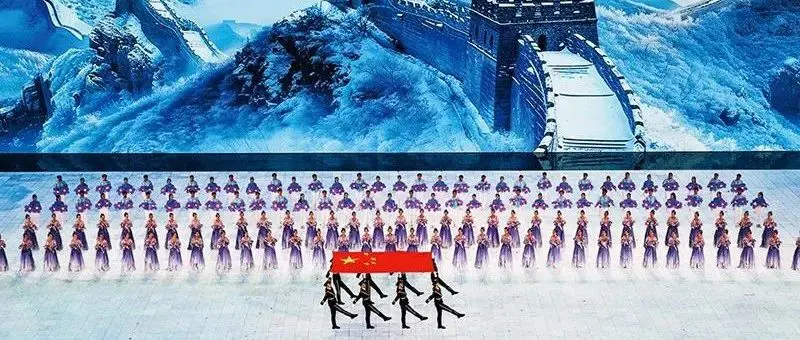Chinese-style Modernization: Pioneering a New Path for Humanity Towards Modern Civilization
Modernization is a significant phase in the course of world history, characterized primarily by humanity's transition from traditional agricultural societies to modern industrial and information societies, along with the comprehensive and profound transformations in social life that this transition entails. As a common pursuit of people across the globe, modernization follows inherent universal laws. However, the specific ways and forms in which these universal laws are realized and manifested in various countries are determined by the actual conditions of each nation.
President Xi Jinping profoundly pointed out, "There is no single model of modernization that reigns supreme in the world, nor is there a universal standard for modernization that applies everywhere," and "modernization is not a multiple-choice question. The diversity of historical conditions determines the diversity of development paths chosen by different countries." Due to the varying circumstances of each country, the universal laws of modernization are realized in different ways across nations, and these different realizations form distinct paths to modernization.

Since the beginning of modern times, the process of world modernization has started from Western capitalist countries, and today's developed countries are mainly European and American nations or capitalist countries deeply influenced by Western civilization. This has led to a misconception that modernization is equivalent to Westernization, and that Western civilization represents modern civilization. Some developing countries once blindly copied the Western model to advance their modernization, only to find it incompatible with their local conditions. The vast majority of them ended up mired in long-term economic stagnation and socio-political turmoil, paying a heavy price for it.
This is because the modernization of developing countries is a latecomer phenomenon, differing from Western developed nations in terms of developmental context, starting point, methods of advancement, and position within the global system. Additionally, variations in historical heritage, cultural traditions, and social systems among nations lead to unique contradictions and problems. For instance, developing countries commonly face dilemmas such as balancing gradual progress with leapfrogging, managing development alongside transformation, and navigating deconstruction versus reconstruction—issues rarely encountered or entirely absent during the modernization of Western developed countries. To resolve these contradictions, it is essential to focus on one's own historical, cultural, and national realities, exploring a path that suits one's specific conditions.
President Xi Jinping pointed out: "Our unique cultural traditions, unique historical destiny, and unique basic national conditions have destined us to follow a development path that suits our own characteristics." In the process of exploring Chinese-style modernization, we have not simply imitated Western countries step by step, but have emphasized proceeding from China's actual conditions to forge our own path to modernization.
For instance, democracy is a shared value of all humanity, but the ways to achieve it vary. Western countries primarily adopt electoral systems, representative systems, and multi-party systems as forms of democracy. In contrast, China has developed a new understanding and creation of democratic forms in practice, explicitly proposing the concept of whole-process people's democracy. This approach integrates democratic elections, consultations, decision-making, management, and supervision through a series of institutional arrangements, forming a comprehensive, all-encompassing, and fully covered democratic system, truly realizing the principle of the people being the masters of the country.
Another example is the traditional Western economic theory's understanding that a market economy and socialism are two entirely distinct systems and mechanisms that cannot be integrated. In the history of global economic development, there has never been a precedent for successfully combining socialism with a market economy. However, China, grounded in its national conditions and developmental stage, creatively proposed the development of a socialist market economy, establishing a dynamic socialist market economy system that has greatly liberated and developed the productive forces of society. There are many such innovations tailored to China's realities.
China has always stayed true to its values and goals, fully leveraged its institutional strengths, and advanced along its own path to successfully achieve Chinese modernization—a model of modernization for a huge population, of common prosperity for all, of material and cultural-ethical advancement, of harmony between humanity and nature, and of peaceful development. This modernization not only follows the general patterns of modernization and shares the features that are common to the modernization processes of all countries, but also carries distinct Chinese characteristics and embodies the essence of Chinese civilization.
The splendid achievements of Chinese modernization show the world that the path to modernization is not limited to the Western one. As the saying goes, all roads lead to Rome. Countries can fully blaze their own paths to modernization. As President Xi Jinping stressed, Chinese modernization has broken the myth that "modernization is equal to Westernization," created a new form of human advancement, expanded the channels for developing countries to achieve modernization, and provided a Chinese solution for humanity to explore better social systems.
It can be said that Chinese modernization has transcended conventional understanding of modernization, charting a new path for late-developing nations to achieve modernization. It declares the bankruptcy of the "end of history" theory, as well as the linear historical view that all countries will inevitably converge toward Western institutional models. Human civilization is diverse, and development paths are varied. Different civilizations should compete to showcase their strengths and values—this is how the world should be.
Taking one's own path does not mean rejecting the paths of others, but rather emphasizes overcoming blind conformity and strengthening independent theoretical and practical exploration. Ultimately, achieving modernization is the right and inevitable choice for people of all countries, with the key being to find a development path that suits their national conditions.

